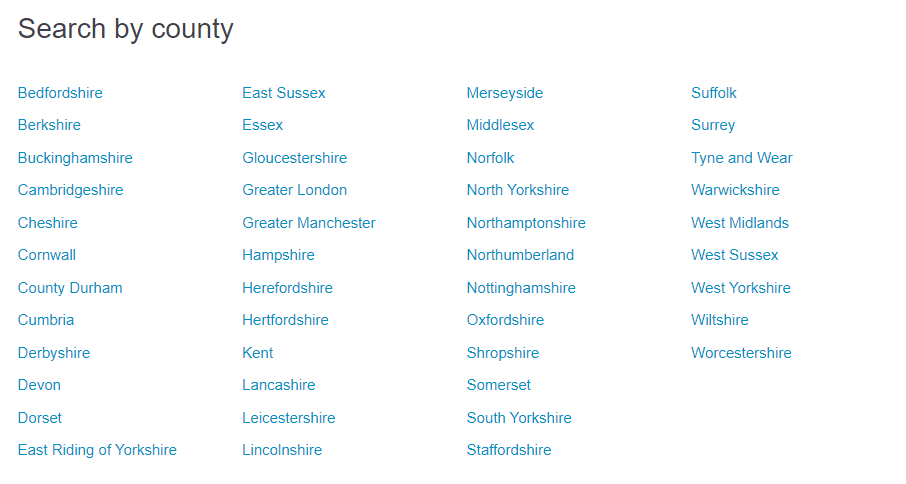

Last updated on

For large-scale enterprises with multiple locations, aligning your SEO strategy with your business strategy is essential for achieving success.
Whether your business follows a franchise model, operates a retail chain, or runs multiple service area hubs, your approach to local SEO must be customized to align with your specific objectives. It should also be scalable and efficient, ensuring sustained return on investment over the long term.
Additionally, it’s crucial that your content strategy delivers substantial value to both users and search engines like Google, ensuring it meets high indexing quality standards.
This necessitates moving beyond conventional local SEO practices to develop a robust local SEO campaign that enhances brand visibility and drives sustainable conversions.
Multi-location businesses have distinct objectives that influence their strategies.
Although the fundamentals of managing multiple locations remain consistent, your approach must align with your overall business strategy and goals.
For instance, a franchise with numerous operators serving various towns, cities, and states will require a different strategy compared to a big-box retailer with hundreds of locations spread across multiple states.
Success metrics will also vary. Typically, the KPIs for enterprise local SEO campaigns fall into one of these categories:
The definition of “success” for your business will significantly influence your strategy for user choice architecture and how you measure and report on success.
Our approach to creating and describing multiple area service pages has evolved over time.
A decade ago, we would produce low-quality pages with minor tweaks and largely identical content, similar to doorway pages, which Google has since devalued.
Recently, with the rise of programmatic SEO (pSEO), this method has become a popular and effective strategy for generating these pages at scale.
For businesses with hundreds or thousands of locations, programmatic or partial-programmatic content creation can be a highly appealing option.
Programmatic SEO (pSEO) enables the scalable generation of large volumes of content, which has proven beneficial for many businesses. However, this approach can also pose challenges if the pages fail to offer a unique value proposition compelling enough for Google to prioritize.
Typically, there are two common website architectures for local service pages:

Depending on your business model, you might default to one structure over the other, each presenting its own set of challenges.
With the central service page structure, the challenge lies in creating distinct value propositions for each page and ensuring that every page meets Google’s quality standards for indexing.
On the other hand, the store locator page approach can lead to issues with PageRank distribution and internal linking. Most user-friendly store locators don’t use HTML links, which means that while the locator visually connects to all stores, Google may not be able to crawl these links.
A common issue with both structures is capturing “wider” search queries related to the locations.
Local pages are most effective when they are specifically tailored to their respective locations.
In the past, I’ve observed companies attempt to achieve this by adding excessive local information—such as details about local infrastructure, schools, and sports teams—to their pages. However, this information is often irrelevant if the goal is to attract customers to a hardware store or promote home-visit security services.
Simply changing the location name in the URL, H1, Title Tag, and body copy is also insufficient. This approach can result in near-duplicate pages with minimal differentiation in their value proposition, leading Google to view them as redundant.
Signs of this issue may include pages not being indexed in Search Console, with Google either ignoring the user-declared canonical or leaving the pages in the “Discovered” or “Crawled, not currently indexed” states.
While some level of duplication is inevitable across local service and location pages, Google accepts this as long as the content maintains quality and relevance.
This is where I often prefer a partially programmatic approach.
Programmatic methods can efficiently handle about 70% or more of a page’s content, covering standard elements like service offerings, pricing, and company information for specific locations.
The remaining portion of the page is crafted manually, allowing for unique value propositions that set each page apart.
For example, if you run a multi-state courier service with main distribution hubs in Austin, San Antonio, and Dallas, and you want to target potential customers in Euless, here’s how it could work:
The services offered in Euless are the same as those in Pflugerville, Kyle, and Leander, so the content describing these services will be similar across all location pages.
However, since Euless is served by the Dallas hub and the other locations are served by the Austin hub, this provides a key point of differentiation.
You can then enrich the Euless page with data such as travel times. For instance, customers searching for courier services from Euless to Austin or Houston will benefit from estimated travel times to these popular destinations. This adds a layer of local expertise and helps customers better understand and plan their service needs.
Additionally, analyzing your business data can reveal insights about customer types. For example, if many Euless jobs are for university students moving to campus, you can incorporate this localized targeting into the page to better connect with that specific customer base.
For internal linking, pseudo-HTML sitemaps can be quite effective. They not only provide clean internal links throughout the site but also enhance user experience and enable the creation of additional landing pages targeting county or area-level searches.

A decade ago, on a property finder page, my team implemented a structure that organized content by County > Town/City. This approach pulled relevant locations into the landing pages, allowing users to manually filter from general pages to their specific local areas.
A crucial aspect often overlooked is directly linking Google Business Profiles (GBPs) to their corresponding location pages on the website.
Many multinational and national companies link their GBPs back to the company homepage, sometimes with a parameter indicating which GBP the user clicked on. This approach results in poor web architecture and an ineffective user experience.
When a user searches for a service or store in a specific location, they expect to be directed to a relevant location page, not a generic homepage.
In terms of user-choice architecture, directing users to a generic page can lead them to miss important information specific to their needs, potentially resulting in lost sales or inquiries.
In addition to Google’s core algorithm and general search ranking factors, there have been specific updates targeting local queries:
These updates make it more challenging for businesses to falsely appear as local contenders and ensure they offer a value proposition that aligns with users’ needs.
Anecdotally, Google appears to favor businesses that provide detailed and comprehensive information, including opening dates, onsite dining options (if applicable), special hours, business categories, service listings, and clearly defined service areas and types.
Adhering to Google’s guidelines is essential, but even then, you might still encounter issues with Google’s automated detection systems.
For example, when working with an international software company with multiple offices across Asia, some of their locations are rented floors in shared office buildings. Google sometimes misidentifies these shared addresses as virtual or fake addresses, a problem that the Possum update aimed to address.
Managing Google Business Profiles for a large enterprise with numerous physical locations can be complex, especially when it involves navigating internal stakeholder interests and understanding how GBPs align with and contribute to broader business objectives and the overall ecosystem.
The way you report success will depend on your specific objectives and can vary between campaigns.
Using the Google API, you can obtain listing-level data, including impressions and detailed user interaction metrics (you can infer impressions and clicks from similar metrics in Google Search Console).

In my view, any business operating across multiple towns, cities, counties, or states should implement GBP monitoring and reporting tools beyond just tracking parameterized URLs in Google Search Console and other analytics platforms (assuming you’re using parameters in your GBP website links).
Original news from SearchEngineJournal